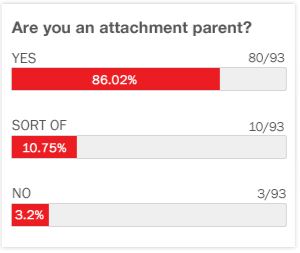
Nothing's better than when your kids are in a good mood. When they're easy-going and happy, everything seems to run smoothly. They are flexible and cooperative when plans change, and even laugh at themselves when they make a mistake. In moments like these, parenting can be fun and pretty easy.
But we all know there are times when children can be biting and sensitive, and fall apart when something doesn’t go just right. WHY WON’T THIS LEGO PIECE CLICK IN?!! In these moments, when our kids dig their heels in and go to battle over every minor issue, parenting can feel like a chore.
What explains these emotional ups and downs in our kids? Believe it or not, a lot of it has to do with the many parts of their brain. The left side of the brain helps you think logically and organize thoughts into sentences, while the right side helps you experience emotions and read nonverbal cues. We each have a “reptile brain” that allows us to act instinctively and make split-second survival decisions, and a “mammal brain” that leads us toward connection and relationships. One part of your brain is devoted to dealing with memory; another to making moral and ethical decisions. It’s almost as if your brain has multiple personalities—some rational, some irrational; some reflective, some reactive. No wonder we can seem like different people at different times!
Biology could be to blame for these mood swings. The key to helping our kids be flexible and adaptive and thoughtful and all the other things we want them to be, is to help integrate these parts of the brain so they work well together as a coordinated whole—a whole brain. When all of the parts of your kid's brain work together like a well-oiled machine, emotions are easier to control.
When your child isn’t working from an integrated whole brain, he becomes overwhelmed by his emotions, confused and chaotic. Tantrums, meltdowns, aggression, and most of the other challenging experiences of parenting—and life—are a result of a loss of integration, also known as “disintegration.” In other words, these problems occur when your little one isn't (and when we ourselves aren't) using his whole brain.
As parents, how can we help our children become better integrated so they can use their whole brain in a coordinated way? Here are a few suggestions:
- Connect and Redirect. When your child is melting down or blowing up emotionally, avoid immediately appealing to his logic. Saying,“Why are you acting this way? I don’t have any snacks in the car” is problematic because it addresses an emotional, right-brain problem using rational, left-brain logic. Instead, connect first emotionally—right brain to right brain. By telling him, “I can tell that you’re really disappointed about the snacks” in a soothing tone of voice, you acknowledge his feelings in a calm manner. Then, once he is more in control and receptive, redirect by bringing in the left-brain lessons and, if necessary, setting some boundaries.
- Name It to Tame It. When a scary or painful experience produces big, out-of-control emotions, don’t dismiss and deny them. Instead, help him tell the story of what happened. Telling a story helps his left brain make sense of all of those unfamiliar emotions that his right brain is experiencing, and this will help him to feel more in control. Storytelling allows both sides of the brain to work together, preventing disintegration.
- Engage, Don't Enrage. In high-stress situations, engage your child’s upstairs brain, which is where his higher-order thinking takes place. Rather than triggering the more primitive and reactive downstairs brain with the “Because I said so!” card, ask questions, collaborate, and even negotiate. The more you can appeal to the upstairs brain and engage him in critical thinking and processing, the more your child will think and act and decide, rather than simply reacting to what he's feeling.
- Get Active. If your child loses touch with his upstairs brain, help him regain balance by having him move his body. Doing a few jumping jacks or running around the yard can directly affect his brain chemistry. Exercise allows him to work through some of his emotions in a healthy way, allowing him to focus on other things afterward. When we change our physical state—through movement or relaxation, for example—we can change our emotional state.
These tips offer the possibility not only of surviving difficult parenting moments, but of actually turning them into times you can help your child thrive by tapping in to his whole brain. Survive and thrive. It really can happen, when you're raising a whole-brain child.
This article originally appeared in Education.com on October 19, 2011. Reprinted with permission of the author.
Article Categories:
Category:
Related Articles You May Like
About Daniel J. Siegel, MD
Daniel J. Siegel received his medical degree from Harvard University and completed his postgraduate medical education at UCLA with training in pediatrics and child, adolescent and adult psychiatry. He served as a National Institute of Mental Health Research Fellow at UCLA, studying family interactions with an emphasis on how attachment experiences influence emotions, behavior, autobiographical memory and narrative.
Dr. Siegel is currently a clinical professor of psychiatry at the UCLA School of Medicine where he is on the faculty of the Center for Culture, Brain, and Development and the Co-Director of the Mindful Awareness Research Center. An award-winning educator, he is a Distinguished Fellow of the American Psychiatric Association and recipient of several honorary fellowships. Dr. Siegel is also the Executive Director of the Mindsight Institute, an educational organization, which offers online learning and in-person lectures that focus on how the development of mindsight in individuals, families and communities can be enhanced by examining the interface of human relationships and basic biological processes. His psychotherapy practice includes children, adolescents, adults, couples, and families. He serves as the Medical Director of the LifeSpan Learning Institute and on the Advisory Board of the Blue School in New York City, which has built its curriculum around Dr. Siegel’s Mindsight approach.
Dr. Siegel has published extensively for the professional audience. He is the co-editor of the Handbook of Psychiatry and the author of numerous articles, chapters, and the internationally acclaimed text, The Developing Mind: How Relationships and the Brain Interact to Shape Who We Are. This book introduces the field of interpersonal neurobiology, and has been utilized by a number of clinical and research organizations worldwide, including the U.S. Department of Justice, The Vatican’s Pontifical Council for the Family, Microsoft and Google. The Developing Mind, Second Edition: How Relationships and the Brain Interact to Shape Who We Are was published in March 2012. Dr. Siegel serves as the Founding Editor for the Norton Professional Series on Interpersonal Neurobiology which contains over 12 textbooks. The Mindful Brain: Reflection and Attunement in the Cultivation of Well-Being explores the nature of mindful awareness as a process that harnesses the social circuitry of the brain as it promotes mental, physical, and relational health. The Mindful Therapist: A Clinician's Guide to Mindsight and Neural Integration explores the application of focusing techniques for the clinician’s own development, as well as their clients' development of mindsight and neural integration. Norton released Dr. Siegel’s the Pocket Guide to Interpersonal Neurobiology: An Integrative Handbook of the Mind in April 2012.
Dr. Siegel’s book, Mindsight: The New Science of Personal Transformation, offers the general reader an in-depth exploration of the power of the mind to integrate the brain and promote well-being. He has written two parenting books, Parenting from the Inside Out: How a Deeper Self-Understanding Can Help You Raise Children Who Thrive with Mary Hartzell, M.Ed. and The Whole-Brain Child: 12 Revolutionary Strategies to Nurture Your Child's Developing Mind with Tina Payne Bryson, PhD., both of which explore the application of the mindsight approach to parenting. Dr. Siegel's latest release is The New York Times bestseller Brainstorm: The Power and Purpose of the Teenage Brain (Tarcher, 2013), which explains how brain development impacts teenagers' behavior and relationships. His next book with Tina Payne Bryson, Ph.D. is No-Drama Discipline: The Whole-Brain Way to Calm the Chaos and Nurture Your Child's Developing Mind.
Dr. Siegel’s unique ability to make complicated scientific concepts easy to understand and exciting has led him to be invited to address diverse local, national and international groups of mental health professionals, neuroscientists, corporate leaders, educators, parents, public administrators, healthcare providers, policy-makers, and clergy. He has been invited to lecture for the King of Thailand, Pope John Paul II, His Holiness the Dalai Lama, Google University, and TEDx. For 2010-2011, Dan is serving as the National Speaker for the Susan G. Komen for the Cure Mindfulness and Integrative Medicine Lectures. He lives in Southern California with his family.











